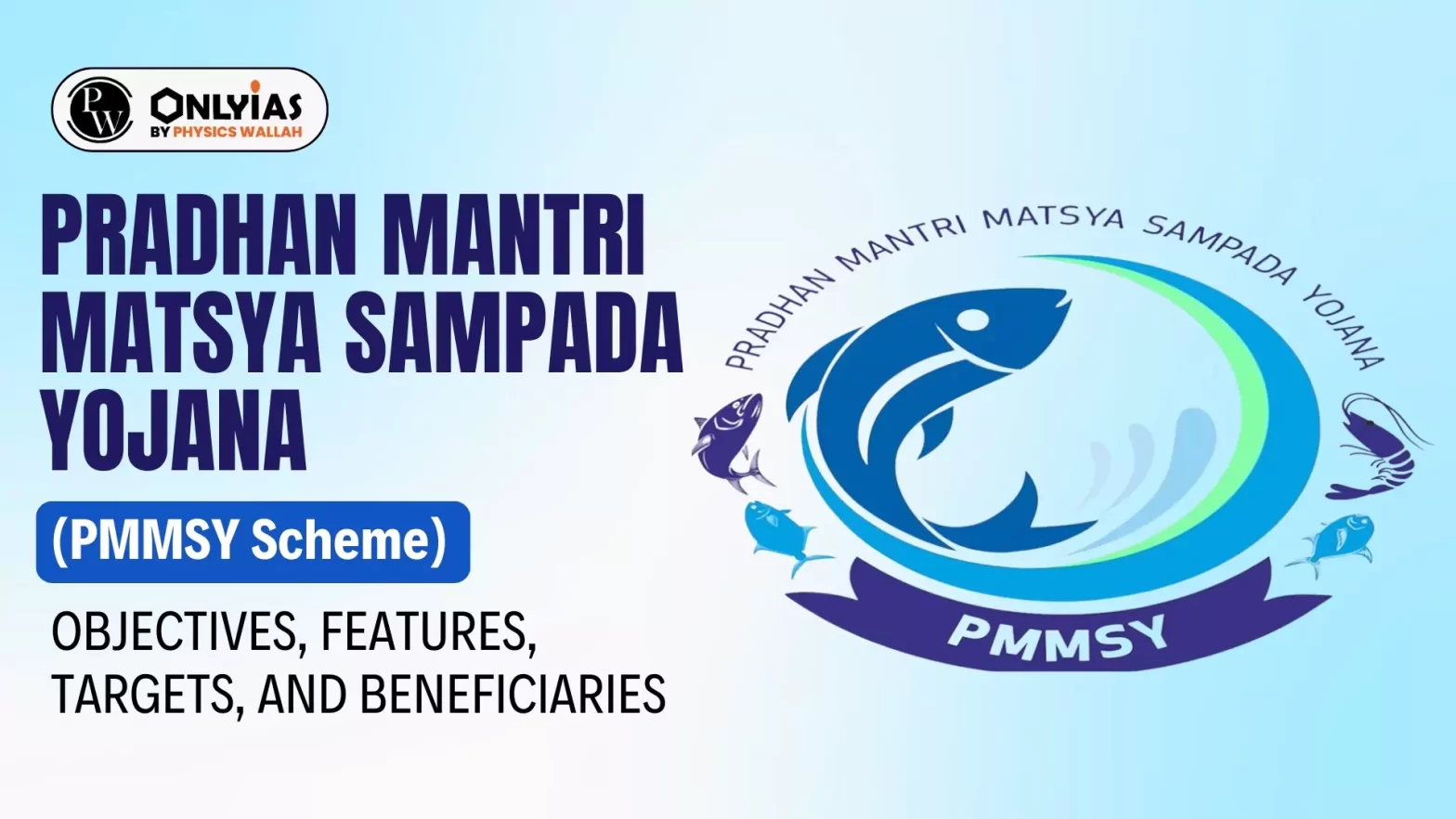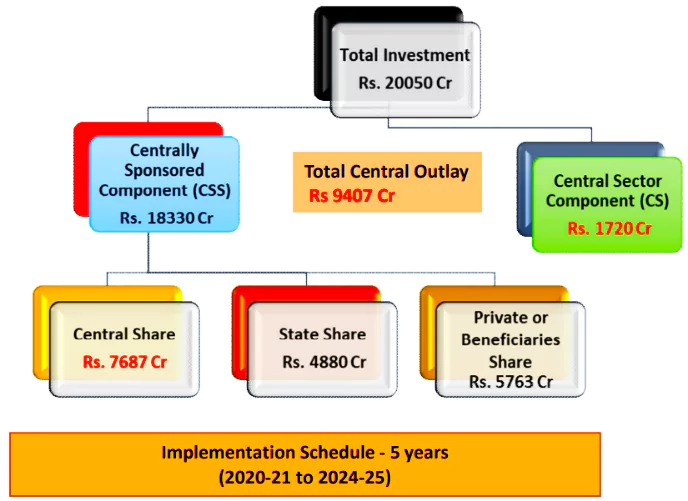![]() PWOnlyIAS
PWOnlyIAS
![]() March 19, 2024 06:38
March 19, 2024 06:38
![]() 611
611
![]() 0
0
The Indian government recently approved a Rs 6,000 crore sub-scheme under the flagship Pradhan Mantri Matsya Sampada Yojana (PMMSY) with the objective of formalising the largely unorganised fisheries sector in the country.

The Indian government recently approved a Rs 6,000 crore sub-scheme under the flagship Pradhan Mantri Matsya Sampada Yojana (PMMSY) with the objective of formalising the largely unorganised fisheries sector in the country.
 Harness the potential of the fisheries sector in a sustainable, responsible, inclusive, and equitable manner.
Harness the potential of the fisheries sector in a sustainable, responsible, inclusive, and equitable manner.| Central Sector Scheme (CS) | Centrally Sponsored Scheme (CSS) | |
|
Non-beneficiary oriented sub-components are shared between Centre and State/UTs:
|
Beneficiary oriented sub-components have combined financial assistance from Centre and State/UTs:
|
The PMMSY would be implemented through the following agencies:
The intended beneficiaries under the Pradhan Mantri Matsya Sampada Yojana are:
| Must Read | |
| NCERT Notes For UPSC | UPSC Daily Current Affairs |
| UPSC Blogs | UPSC Daily Editorials |
| Daily Current Affairs Quiz | Daily Main Answer Writing |
| UPSC Mains Previous Year Papers | UPSC Test Series 2024 |
<div class="new-fform">
</div>

Latest Comments